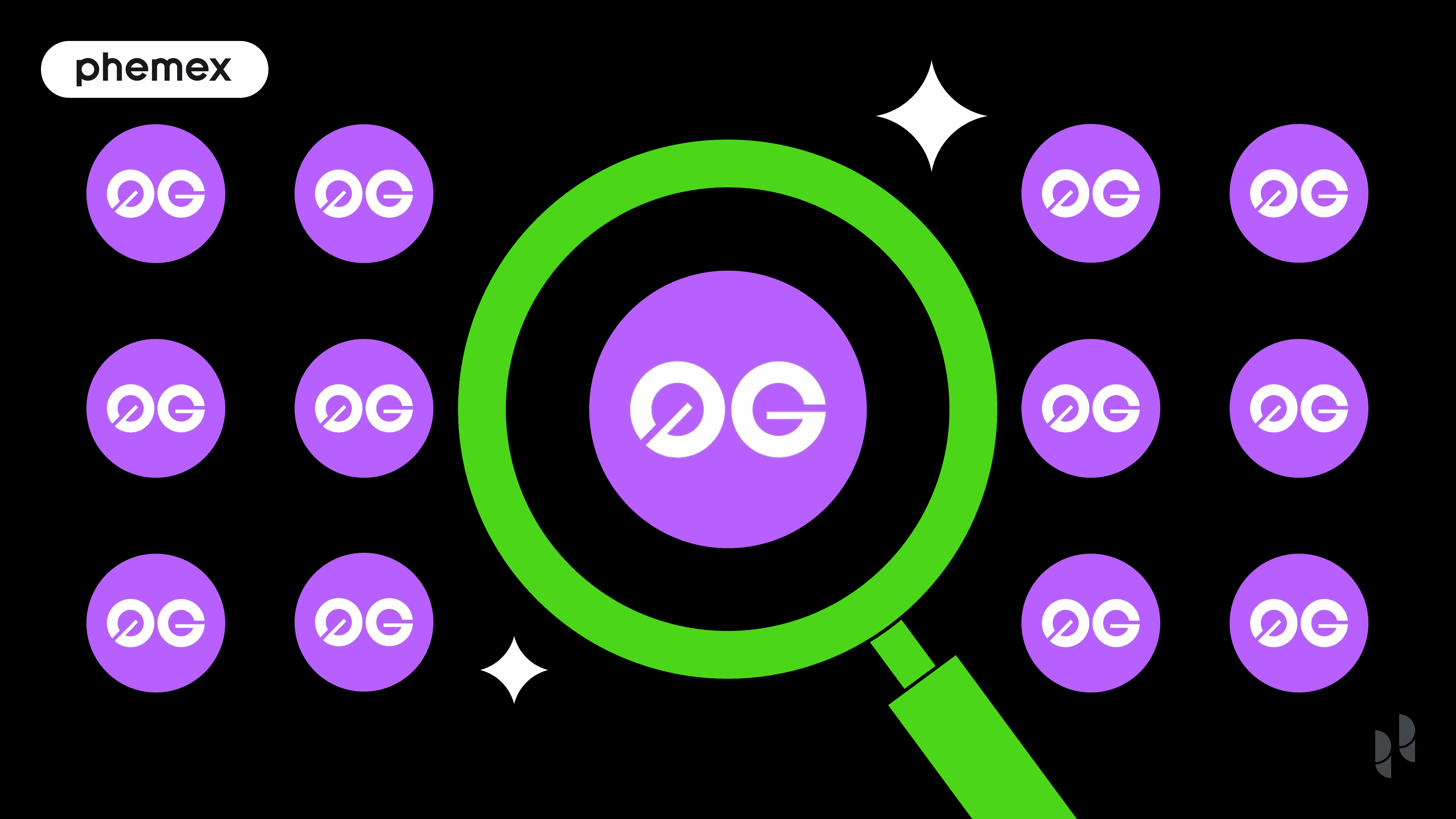What is Oasis Network (ROSE)?
Oasis Network (ROSE) stands as a revolutionary force in the evolution of blockchain technology, marking a pivotal moment in its development. This layer-1 blockchain network represents a paradigm shift, seamlessly blending high throughput, low gas fees, and a secure architecture. Meticulously designed, Oasis Network serves as the foundational infrastructure for Web3, the future iteration of the internet that champions decentralization, privacy, and user empowerment. This visionary blockchain powers an extensive array of applications, ranging from decentralized finance (DeFi) and GameFi to non-fungible tokens (NFTs), the Metaverse, data tokenization, and Data DAOs. With substantial backing from influential industry players and a robust Ecosystem Fund, Oasis Network is strategically poised to drive Web3 from its nascent stages to complete maturity. Noteworthy partnerships with tech giants like Meta and automotive leader BMW Group underscore the platform's unwavering commitment to privacy protection, data governance, and responsible data use.
How does Oasis Network (ROSE) work?
Oasis Network operates on the cutting edge, leveraging a dual-layer architecture comprising the Consensus Layer and the ParaTime Layer. This innovative structural design provides a distinct advantage by separating consensus and execution, unlocking unparalleled scalability and versatility. The network's ability to enable multiple ParaTimes to process transactions concurrently ensures that the execution of simpler tasks remains unhindered by more complex operations, fostering an agile and responsive blockchain ecosystem.
A significant milestone for Oasis Network is its status as the first layer-1 blockchain natively supporting Rollups at the Consensus Layer. This groundbreaking feature empowers developers by offering a decentralized platform where they can create bespoke ParaTimes tailored to the specific needs of diverse applications. The integration of Rollups significantly enhances the network's capacity to handle a large volume of transactions with increased efficiency and reduced costs, positioning Oasis Network as a pioneer in the blockchain space.
Oasis Network (ROSE) Tokenomics
The native token of Oasis Network, ROSE, assumes a pivotal role in ensuring the functionality and sustainability of the ecosystem. With a current supply of 1.5 billion tokens and a total supply cap set at 10 billion ROSE, the intricately designed tokenomics are a cornerstone of the network's operations. ROSE tokens are strategically distributed to various stakeholders, including staking rewards, allocations to backers, strategic partners, the community, the foundation endowment, and core contributors.
ROSE tokens serve as a versatile utility within the Oasis Network ecosystem, offering users the ability to pay for transaction fees, participate in staking, and delegate their tokens to secure the blockchain. This active involvement contributes to the network's security and consensus mechanism. The incentivization of users through staking rewards ensures an engaged and robust community.
The well-thought-out tokenomics model guarantees that ROSE remains an integral component, sustaining the decentralized, secure, and efficient operations of Oasis Network. The careful distribution of tokens not only ensures the platform's viability but also fosters a thriving ecosystem that actively encourages user participation, contributing to the ongoing growth and development of Oasis Network.
Oasis Network (ROSE) Network Structure
The structural foundation of Oasis Network is anchored in its innovative two-layer architecture, designed to cater to the specific needs of diverse Web3 applications. The Consensus Layer and ParaTime Layer work in tandem to provide enhanced security, confidentiality, and scalability.
- Consensus Layer: This layer is responsible for ensuring the security of the network through a Proof of Stake (PoS) mechanism. Validators, key participants in this layer, play a crucial role in maintaining operational integrity. They propose and validate new blocks in the blockchain, ensuring the accuracy and legitimacy of all transactions. Validators are selected based on their level of participation, determined by the amount of ROSE tokens they allocate. This Proof of Stake mechanism aligns the interests of validators with the success of the network, fostering honesty and reliability. Individuals seeking to become validators must meet specific hardware requirements, install designated software, and allocate a minimum amount of ROSE tokens.
- ParaTime Layer: This layer functions as a sandboxed environment for executing smart contracts. The separation of the Consensus and ParaTime Layers not only enhances security but also facilitates confidentiality and scalability. Smart contracts can be executed in an isolated environment, contributing to the overall efficiency and responsiveness of the Oasis Network.
The unique consensus mechanism employed by Oasis Network allows participants to "prove they’ve allocated their crypto" to the network, earning non-monetary acknowledgments for their involvement. Validators are chosen to create new blocks based on various factors, including their level of participation in the network.
- Oasis Network is actively engaged in several initiatives to advance its capabilities:
- Oasis SDK: A software development kit designed to standardize ParaTimes development, simplifying the creation of new ParaTimes and enabling seamless communication between them.
- Confidential ParaTime: A project by the Oasis Protocol Foundation, aiming to provide developers with access to confidential smart contracts and tools, including a bridge with Ethereum.
- Inter-Blockchain Communication (IBC): Supporting easy communication with other networks using the protocol, fostering interoperability.
- Oasis-first Wallets: Web-based wallets accessible as Chrome extensions, enhancing user accessibility and convenience.
- Parcel as a ParaTime: A project focused on integrating the numerous projects developing with the API fully onto the Oasis Network.
- Grants Program: Initiatives to support and fund developers working on projects within the Oasis Network ecosystem.
- Decentralized Exchange (DEX): A privacy-focused DEX, demonstrating the platform's commitment to privacy protection.
What is the total supply of Oasis Network (ROSE)?
Oasis Network has established a total supply limit of 10 billion ROSE tokens, underscoring its commitment to maintaining a sustainable and well-managed ecosystem. This token distribution strategy supports various aspects of the network, including staking rewards, development initiatives, and community engagement. The cap ensures responsible token management, aligning with the long-term goals of the platform and promoting a healthy and vibrant Oasis Network community.
Pros of Oasis Network (ROSE)
Innovative Dual-Layer Architecture
Oasis Network's unique dual-layer architecture, consisting of the Consensus Layer and ParaTime Layer, is a significant advantage. The separation of consensus and execution contributes to enhanced scalability and security. This innovative structural design allows for more efficient and responsive blockchain operations.
Privacy-Focused Technologies
Oasis Network stands out for its robust focus on privacy, leveraging technologies such as the Trusted Execution Environment (TEE). This feature ensures the confidentiality and integrity of data, making it a leader in privacy-preserving blockchain solutions. The support for confidential smart contracts further enhances the privacy measures embedded within the network.
Rollups Support
The network's support for Rollups is a notable feature that adds to its appeal for developers and users. Rollups enhance the capacity of the Consensus Layer, allowing for increased transaction throughput and reduced costs. This feature makes Oasis Network an attractive choice for those looking for efficient and cost-effective blockchain solutions.
Flexibility and Versatility
Oasis Network's flexibility is another advantage, making it a versatile platform for various Web3 applications. Developers can create ParaTimes tailored to specific application needs, showcasing the adaptability of the network. This versatility contributes to the platform's appeal for a wide range of use cases, from decentralized finance (DeFi) to data tokenization.
Cons of Oasis Network (ROSE)
Complexity of Dual-Layer Architecture
One potential challenge is the complexity of Oasis Network's dual-layer architecture. While it offers significant benefits, understanding and navigating the intricacies of the Consensus and ParaTime Layers may pose a learning curve for developers who are new to the ecosystem. This complexity could potentially slow down the onboarding process for those unfamiliar with the platform.
Building and Maintaining Community
As a relatively new player in the blockchain space, Oasis Network faces the task of building and maintaining a robust community of developers and users. Establishing a vibrant ecosystem is crucial for the sustained growth and success of the network. Encouraging developer participation and user engagement will be essential in overcoming this challenge and solidifying Oasis Network's position in the blockchain landscape.
More Examples of Best AI Crypto Coins
Polkadot (DOT):
Polkadot is a multi-chain network designed to facilitate the transfer of messages and value between diverse blockchains in a trust-free fashion. Its interoperability features make it a key player in the blockchain ecosystem, fostering collaboration and connectivity among different blockchain networks.
Chainlink (LINK):
Chainlink operates as a decentralized oracle network, connecting smart contracts with real-world data. This integration enhances the capabilities of smart contracts by providing them with access to external information, bridging the gap between blockchain and real-world applications.
Graph (GRT):
Graph is a decentralized protocol focused on indexing and querying data from blockchains, starting with Ethereum. This protocol enables efficient data retrieval, making it a crucial component for developers building decentralized applications (DApps) that require access to blockchain data.
Read More
- What is Oasis Network (ROSE): The First Privacy-Enabled Blockchain Platform for Web 3.0
- What is Osmosis (OSMO): A DEX Offering Customizable AMMs
- What is Orchid: Blockchain’s First Decentralized VPN
- What is OpenSea: The Peer-To-Peer NFT Marketplace
- What Is Ocean Protocol: A Data Marketplace on Blockchain
- What is the OMG Network: The Payment System of the Future?
- Phemex Analysis in A Minute: OM Surge 325% in 5 Days! What's Next?
- https://phemex.com/academy/defi








